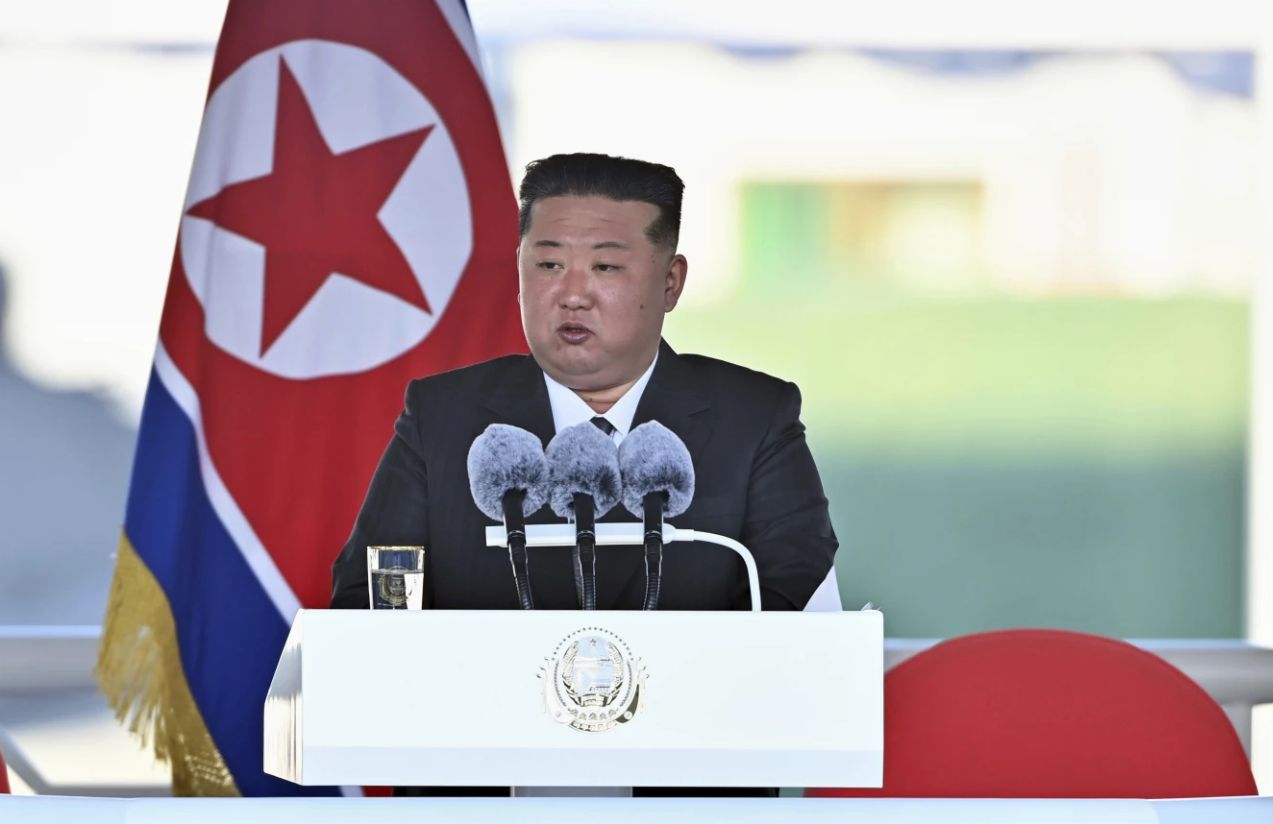North Korea suffered an unusual setback this week when the launch of its second naval destroyer ended in failure—an incident that drew the ire of leader Kim Jong Un, who publicly blamed those responsible for the project. The state-run media reported the mishap on Thursday, marking a rare acknowledgment of military failure by the secretive regime.
The launch ceremony, held Wednesday at the northeastern port of Chongjin, went awry when the new 5,000-ton destroyer tilted dangerously and sustained damage to its lower structure. According to the Korean Central News Agency (KCNA), a carriage used to lower the ship slipped at the stern, triggering the incident. The report did not detail the extent of the damage or whether anyone was injured.
Visibly enraged, Kim called the event a “serious accident” and a “criminal act” stemming from “utter negligence, irresponsibility, and unscientific empiricism.” He announced an emergency meeting of the ruling Workers’ Party for late June to address what he described as “irresponsible mistakes.”
Experts say the unusual public disclosure points to Pyongyang’s determination to modernize its navy and Kim’s seriousness about naval advancement. “It’s an embarrassing episode, but the fact that North Korea revealed it shows it wants to highlight its commitment to naval modernization and confidence in reaching its goals,” said Moon Keun-sik, a naval expert at Hanyang University in Seoul.
Moon suggested that the mishap may have resulted from the workers’ lack of experience handling such a large vessel, combined with pressure to launch it quickly.
The damaged destroyer is believed to be the same class as the Choe Hyon, the first of its kind unveiled by North Korea last month. Analysts describe it as the country’s most advanced warship to date. Named after a renowned Korean guerrilla fighter from the Japanese colonial era, the vessel is equipped with capabilities to launch ballistic and cruise missiles and is designed to carry anti-ship and anti-air weapons.
Kim stated that the Choe Hyon is expected to become operational early next year and recently oversaw missile tests launched from the ship. South Korean Joint Chiefs of Staff spokesperson Lee Sung Joon said Thursday that the damaged vessel likely has similar capabilities and remains tilted in the sea, partially covered with tarps, according to satellite images from Planet Labs PBC analyzed by the Associated Press.
Previous commercial satellite images had already indicated that North Korea was building a second destroyer at the Chongjin shipyard. The Beyond Parallel project, run by the Center for Strategic and International Studies (CSIS), identified the ship as part of the Choe Hyon class of guided missile destroyers.
A recent report from 38 North, a website focused on North Korea, noted that the destroyer was being prepared for a side launch—an uncommon method in North Korea. In contrast, the first ship was launched using a floating dry dock at the western port of Nampo.
Analysts and South Korean officials believe North Korea’s naval program may be receiving technical assistance from Russia, amid deepening military ties between the two countries. While North Korea’s navy is considered technologically inferior to regional rivals, the deployment of missile-equipped destroyers with advanced radar systems is seen as a significant threat.
Kim has framed the expansion of his military capabilities as a defensive response to what he sees as growing threats from the U.S. and South Korea, who have intensified joint military exercises in recent years in response to North Korea’s nuclear weapons program. Kim has also made clear that acquiring a nuclear-powered submarine is his next major goal for bolstering the navy.
In what appeared to be a show of strength following the failed launch, North Korea fired multiple cruise missiles on Thursday from a location about 300 kilometers south of Chongjin. South Korea’s Joint Chiefs of Staff said the launches are being analyzed in coordination with U.S. intelligence agencies. The tests are part of a series of weapons demonstrations by Pyongyang in recent years.

